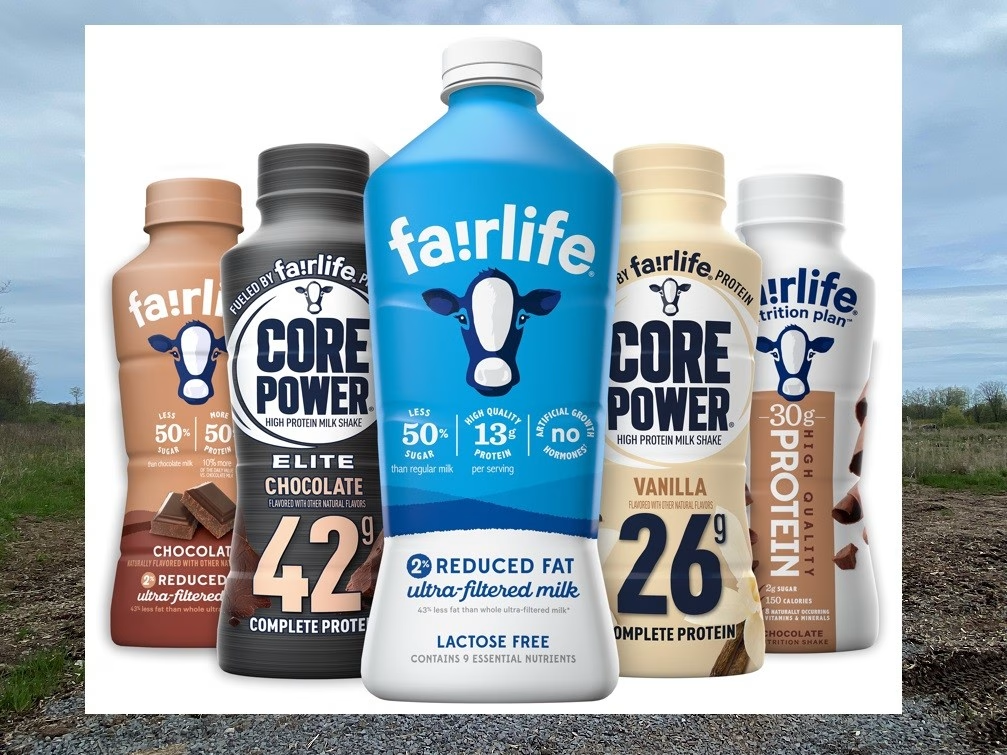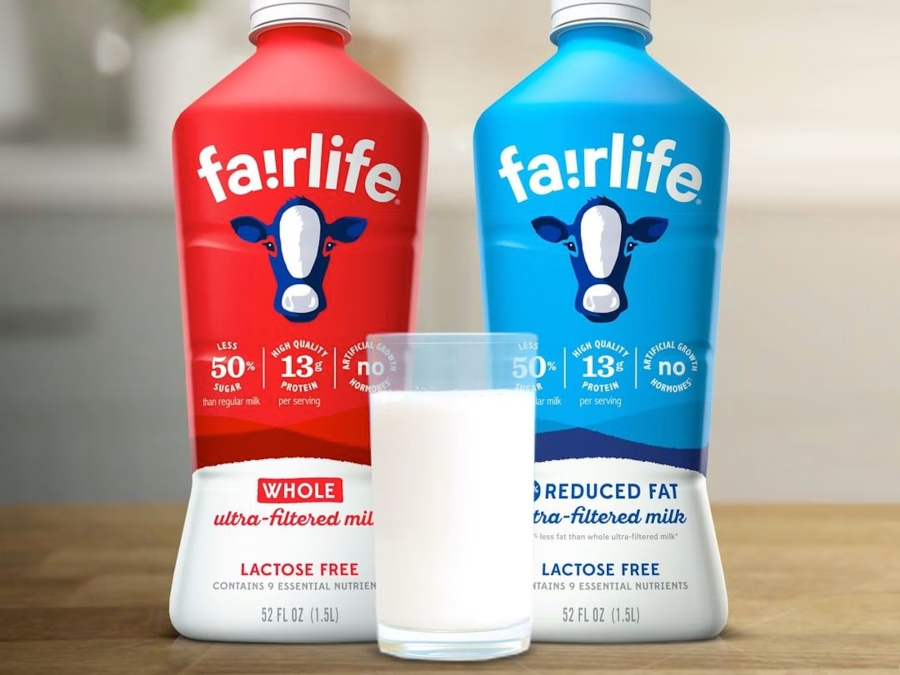Follow the journey of Fairlife milk from farm to fridge. Learn how it ensures quality and sustainability. Explore the process that delivers premium dairy to you.

Imagine a world where milk is not just a dietary staple but a powerhouse of nutrition, ethical production, and innovation. This is the world of Fairlife Milk, a game-changer in the dairy industry. With its high-protein, ultra-filtered milk, Fairlife offers a product that stands out. It provides 50% more protein and 50% less sugar and is lactose-free, making it a unique and superior choice. Its commitment to advanced dairy technology and animal welfare is truly remarkable.
In an era where consumers are increasingly mindful of their diet and the environment, Fairlife offers an ideal solution. Its production methods not only enhance nutritional value but also reduce environmental impact. Fairlife is set to redefine industry standards as a pioneer in sustainable dairy farming. Its innovative approach not only boosts health benefits but also adheres to ethical farming practices, making it a choice that resonates with the environmentally conscious.
Understanding Fairlife’s production is essential for those making informed choices about nutrition and environmental impact. Let’s explore how Fairlife transforms our milk, one glass at a time.
Fairlife: Revolutionizing Dairy with Innovation, Sustainability, and Ethics
Fairlife, famed for its ultra-filtered milk with enhanced nutritional benefits, stemmed from a desire to innovate the dairy industry. Mike and Sue McCloskey co-founded Fairlife in 2012. They aimed to improve dairy quality, sustainability, animal welfare, and environmental stewardship. Mike’s veterinary background and Sue’s expertise in food science propelled their mission to transform dairy farming practices.
Fairlife has demonstrated a strong commitment to responsible farming through its partnership with Select Milk Producers. This commitment is reflected in their products, which meet consumer demands for higher protein and lower sugar while ensuring top animal care and sustainability standards. Their rigorous filtration techniques set new industry standards, enhancing milk’s nutritional profile and reassuring consumers of its quality.
Fairlife embraced a holistic approach to dairy farming, using state-of-the-art technology and best practices in animal welfare. Their farms in Indiana and operations like Nathan Chittenden’s in upstate New York ensure ample space, comfortable bedding, and well-ventilated barns, aligned with the Five Freedoms principle.
Fairlife’s pioneering efforts have earned a reputation for quality and ethical farming, driven by the McCloskeys’ dedication to innovation, animal respect, and environmental care, solidifying Fairlife’s leadership in the modern dairy industry.
A Glimpse into Chittenden Farm: A Paragon of Ethical Dairy Practices
At the core of Fairlife’s dedication to quality milk production is its partnership with meticulously managed farms like the Chittenden farm in upstate New York. Nathan Chittenden and his family care for 1,500 Jersey cows in spacious, well-ventilated barns that ensure the animals’ comfort and protection. Milking occurs three times daily, taking about as long as reciting “The Farmer in the Dell.”
Fairlife’s commitment to animal welfare is unwavering. By adhering to the ‘Five Freedoms’ and ensuring clean bedding, ample space, and ventilated housing, they foster a healthy environment for their cows. Fairlife also ensures humane treatment with protocols for stress-free euthanasia when necessary. This rigorous and compassionate approach results in superior, ethically produced milk and garners support from consumers who value such practices.
The Journey of Fairlife Milk: From Farm to Table
Milk collection starts on the farm and extends to processing facilities, ensuring high quality and safety. Milking is done using automated systems, making the process efficient and stress-free for cows, with strict hygiene standards in place. After milking, milk is rapidly cooled to around 37-39°F (3-4°C) in refrigerated bulk tanks, maintaining quality and preventing bacterial growth.
Transportation involves stainless steel milk tankers that keep the milk cool and contamination-free. These tankers use advanced tracking and temperature monitoring systems, maintaining milk integrity from farm to processing plant. Upon arrival, the milk undergoes tests for safety and quality, including checks for antibiotics, ensuring it meets high standards.
This rigorous, disciplined approach to milk collection builds consumer trust and supports sustainability and ethical practices from farm to table.
Innovation in Every Drop: Fairlife’s Ultra-Filtration Process Redefines Dairy
At the core of Fairlife’s innovative milk offering is its proprietary ultra-filtration process, which redefines traditional milk production. This method begins with regular milk, meticulously filtered to separate water, minerals, lactose, protein, and fats. Using advanced filtration membranes, Fairlife ensures precise isolation of these components, allowing for custom recombination of nutrients.
What sets Fairlife apart is its impressive protein content. The ultrafiltration process concentrates proteins, resulting in milk with 50% more protein, 30% more calcium, and less sugar than conventional milk, all without artificial additives. This process also removes lactose, making the milk suitable for lactose-intolerant individuals.
Every phase of this process reflects Fairlife’s commitment to quality. High-pressure pumps and specialized filters ensure that only desirable molecules are retained, achieving an elevated standard of purity. By fine-tuning the balance of components, Fairlife exceeds industry benchmarks for dairy nutrition, enhancing the milk’s texture and taste.
Fairlife’s ultra-filtration technology blends innovation with tradition, merging science with values of quality and sustainability. This process sets a new industry standard and exemplifies Fairlife’s dedication to delivering superior, nutritious products.
Nutritional Superiority: Elevated Protein, Calcium, and Reduced Sugar
Fairlife milk has an enhanced nutritional profile and offers significant advantages over conventional dairy products. Its high protein content delivers 50% more protein per serving, aiding muscle repair and growth for active individuals. Additionally, Fairlife milk boosts calcium content by 30%, ensuring consumers meet their daily nutritional needs for strong bones and teeth. This fortified calcium is particularly beneficial for those with lactose intolerance or dietary restrictions. Furthermore, Fairlife reduces sugar content by up to 50% through an ultra-filtration process that removes lactose, adding back a controlled amount of sugar. This makes Fairlife a healthier and pleasantly sweet alternative for those monitoring their sugar intake.
Quality Assurance: The Bedrock of Fairlife’s Dairy Excellence
At the core of Fairlife’s commitment lies a robust quality assurance framework, ensuring every milk bottle meets the highest standards. This begins on the farm, with stringent protocols for optimal cow conditions. Regular veterinary check-ups, comprehensive emergency plans, and adherence to the five freedoms—freedom from thirst, hunger, discomfort, pain, and fear—are integral. These principles enable cows to engage in natural behaviors.
Fairlife collaborates with exemplary farms like Chittenden Farm and Walmoore Holsteins, which adopt best practices in dairy farming, including energy conservation and advanced ventilation systems. These innovations ensure cows live comfortably and are milked efficiently, blending modern technology with traditional ethics. Every milking process element is carefully timed and monitored to maintain animal welfare and milk quality, upholding best practices in herd management.
Fairlife’s ultra-filtration process epitomizes its pursuit of perfection, enhancing the milk’s nutritional profile and ensuring it meets strict safety and quality standards. Regular lab tests and rigorous quality checks throughout the supply chain underscore Fairlife’s dedication to delivering a trusted product. By combining cutting-edge technology, ethical farming, and comprehensive quality control measures, Fairlife redefines the excellence of the dairy industry.
Fairlife’s Commitment to Environmental Sustainability: A Holistic Approach
Fairlife’s commitment to environmental sustainability weaves through all operations, emphasizing minimizing its ecological footprint while setting new eco-friendly benchmarks. Partnering with farms like Walmoore Holsteins in West Grove, Pennsylvania, which uses LED lighting and solar panels, Fairlife showcases how modern dairy farming can align with environmental stewardship. Their animal welfare practices address cows’ physical and emotional needs, highlighting a holistic approach to sustainability.
Advanced agricultural technologies reduce dairy farming’s environmental impact. Precision farming optimizes water and feed use, minimizing waste and conserving resources. Fairlife’s innovative packaging solutions, which are recyclable and biodegradable, further exemplify their commitment to waste reduction.
Fairlife ensures that the entire supply chain upholds high environmental standards. From farm to table, they work to lower carbon emissions and invest in community-based ecological initiatives. These efforts establish Fairlife as a leader in sustainable dairy production, setting a new industry standard and reinforcing their dedication to a greener future.
Preserving Perfection: Fairlife’s Advanced Packaging and Distribution Strategies
Fairlife’s dedication to quality extends from the farm to packaging and distribution. After ultra-filtration, the milk is placed into sterile, light-blocking containers that preserve its nutritional content and freshness. This method extends shelf life and reduces food waste, aligning with Fairlife’s sustainability goals. Using advanced refrigerated logistics, Fairlife maintains optimal temperatures during distribution, ensuring the milk’s quality until it reaches retailers. Strategic partnerships with local distributors enable nationwide access to their innovative dairy products, providing customers receive them promptly and in excellent condition.
Customer Testimonials: A Testament to Fairlife’s Excellence in Quality and Ethics
Consumers have consistently praised Fairlife milk for its exceptional taste and nutritional benefits. Jessica L. shared, “Fairlife milk has transformed my morning routine. With its elevated protein content and reduced sugar, I feel energized and healthier without compromising taste.” Mark S. appreciated the brand’s commitment to sustainability, stating, “Knowing that Fairlife prioritizes animal welfare and environmental sustainability makes me feel good about my purchase. It’s not just delicious milk; it’s milk produced with a conscience.” Parents have also expressed their gratitude for Fairlife’s offerings. Samantha K., a busy mother of three, said, “Fairlife’s high-calcium, high-protein milk makes it easier to meet my kids’ dietary needs without the added sugars found in other brands.”
Moreover, athletes and fitness enthusiasts have praised the brand. John A., a personal trainer, commented, “Fairlife milk is my go-to recovery drink post-workout. Its higher protein content aids muscle recovery, and the taste is fantastic.” These testimonials highlight that Fairlife milk is not just a beverage but a superior nutritional choice that aligns with ethical and health-conscious values.
The Bottom Line
One central theme stands out throughout this exploration of Fairlife’s approach to dairy production: the blend of innovation, ethical practices, and sustainability that distinguishes Fairlife in the dairy industry. The journey from cows at Chittenden Farm to the ultra-filtered milk on your table reflects an unwavering commitment to quality, nutrition, and environmental stewardship. From farms dedicated to animal welfare, every step is managed to ensure superior quality. The ultra-filtration process enhances nutritional content by elevating protein and calcium while reducing sugar, showcasing Fairlife’s dedication to healthier dairy options. Sophisticated packaging and distribution ensure every bottle of Fairlife milk remains as fresh and nutritious as the moment it leaves the farm. Choosing Fairlife is more than a grocery decision; it invests in a dairy production model that prioritizes animal well-being, consumer health, and planet sustainability. At the crossroads of dietary choices and environmental responsibility, let Fairlife guide us toward a conscientious and healthful way of living. Embrace Fairlife’s vision and step toward a future where dairy excellence means ethical and sustainable practices.
Key Takeaways:
- Fairlife leverages innovative, ethical, and sustainable dairy practices to revolutionize the milk industry.
- Chittenden Farm exemplifies ethical dairy farming, emphasizing animal welfare and quality production.
- Fairlife’s ultra-filtration process sets new standards in dairy, enhancing nutritional content while reducing sugar.
- The brand prioritizes quality assurance through rigorous standards from farm to table.
- Fairlife’s environmental sustainability efforts encompass holistic approaches, including advanced packaging and distribution strategies.
- Customer testimonials reinforce Fairlife’s commitment to exceptional quality and ethical practices.
Summary:
Fairlife Milk, founded in 2012 by Mike and Sue McCloskey, is a dairy product that offers high-protein, ultra-filtered milk with enhanced nutritional benefits. They partner with Select Milk Producers, a cooperative committed to responsible farming. They introduce products that meet consumer demands for higher protein and lower sugar while maintaining high animal care and sustainability standards. Fairlife’s rigorous filtration techniques set new industry standards, enhancing milk’s nutritional profile. Their holistic approach to dairy farming includes state-of-the-art technology and best practices in animal welfare. Their farms in Indiana and upstate New York use automated systems for efficiency and hygiene. Their proprietary ultra-filtration process concentrates proteins, resulting in milk with 50% more protein, 30% more calcium, and less sugar than conventional milk. Fairlife’s commitment to environmental sustainability is holistic, with innovative packaging solutions that are recyclable and biodegradable.












